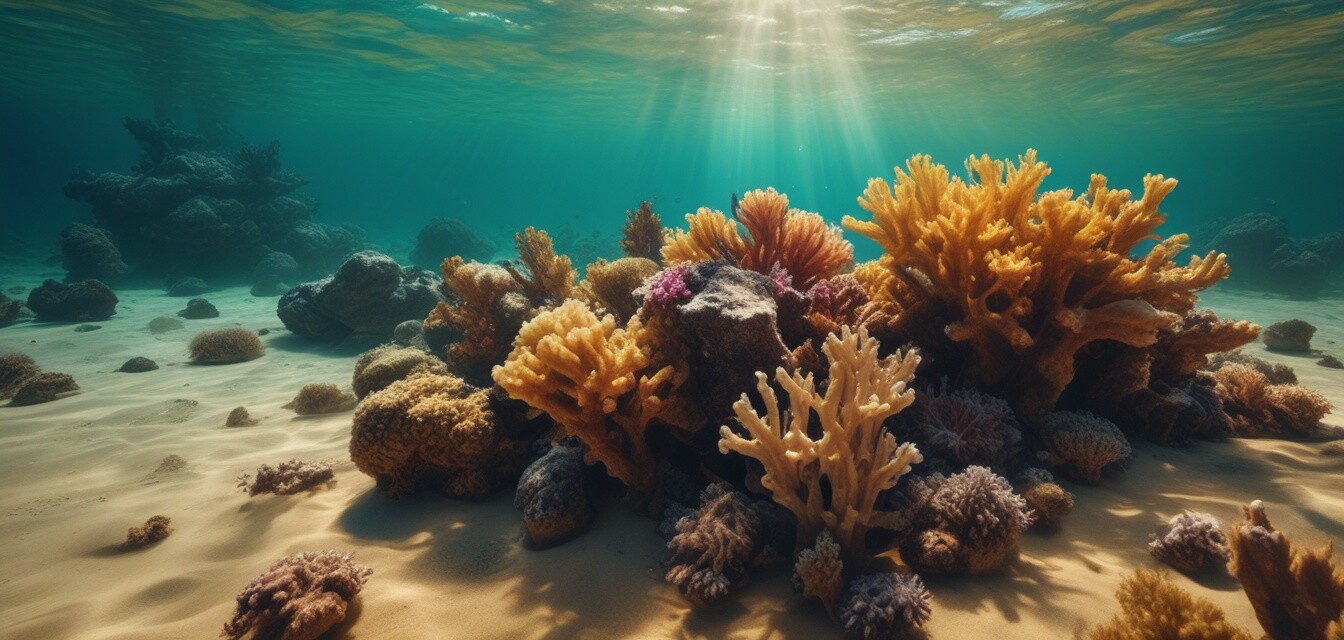
Tips for Capturing Underwater Textures
Key Takeaways
- Understanding different underwater textures enhances your photography.
- Lighting plays a significant role in capturing details.
- Using manual settings allows for better control over your shots.
- Experiment with angles and composition for unique results.
- Familiarize yourself with various underwater surfaces, such as sand and coral.
Underwater photography opens up a world filled with mesmerizing textures, from the intricate patterns of coral to the soft, shifting grains of sand. Capturing these details requires technique and a keen eye. In this article, we will explore several tips to help enhance your skills when photographing underwater textures.
Understanding different textures
The underwater landscape is diverse, featuring materials that range from hard surfaces to soft, flowing elements. Here’s a breakdown of common underwater textures you might encounter:
| Texture | Description | Best Techniques |
|---|---|---|
| Coral | Vivid, intricate structures created by coral polyps. | Use macro settings to capture details and vibrant colors. |
| Sand | Fine particles that can shift and change, creating patterns. | Focus on compositions against light sources for dramatic effects. |
| Rock | Solid surfaces that often host other marine life. | Utilize wide angles to capture the surrounding environment. |
| Seaweed | Soft, flowing textures that add life to underwater shots. | Experiment with movement and currents to create dynamic photos. |
Lighting considerations
Lighting is crucial when photographing underwater textures. Here are some essential tips:
- Natural Light: Try to shoot when the sun is directly overhead for the best natural light, typically between 10 a.m. and 2 p.m.
- Use a Flash: A strobe can help illuminate darker areas or enhance colors, especially in deeper waters.
- Adjust White Balance: Ensure your camera settings are adjusted according to the depth to maintain accurate color representation.
Camera settings for underwater photography
Mastering your camera settings will enable you to capture textures effectively. Here are some recommended settings:
- ISO: Set a lower ISO (100-400) for brighter days, but you can increase it in darker environments.
- Aperture: Use a wide aperture (f/2.8 - f/5.6) for shallow depth of field or a narrower aperture (f/8 - f/11) for landscape shots.
- Shutter Speed: Keep it at 1/125 seconds or faster to avoid motion blur.
Composition tips
Effective composition is key to showcasing underwater textures beautifully. Consider these techniques:
- Rule of Thirds: Use the rule of thirds to create balance in your composition.
- Leading Lines: Incorporate natural lines such as the edge of the reef or flowing seaweed to draw the viewer’s eye into the image.
- Perspective: Shoot from different angles and heights to create variety in your shots.
Post-processing tips
Edit your photos post-capture to enhance textures further:
- Color Correction: Adjust color balance to restore richness often lost underwater.
- Sharpness: Increase sharpness to bring out fine details in textures.
- Contrast: Adjust contrast to highlight differences between textured surfaces.
Final thoughts
Capturing underwater textures is an art that can enhance your underwater photography portfolio significantly. Take your time to learn about different materials, play with lighting, and experiment with your camera settings. Most importantly, enjoy the beauty and serenity of underwater environments while you photograph.
Pros
- Unique textures create captivating images.
- Practicing helps improve overall photography skills.
- The underwater environment is visually stunning.
Cons
- Lighting can be unpredictable.
- Equipment can be costly.
- Requires special training for safety.
Additional resources
For more tips and techniques on underwater photography, check out our related articles:

